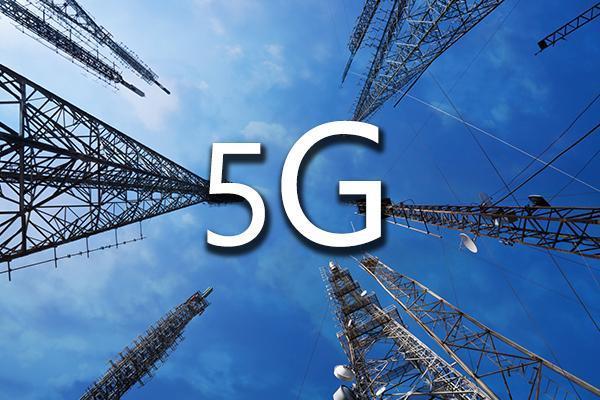As the world now prepares for next-generation 5G networks knowing that rollouts are still three to five years away, companies like Apple, Samsung and Intel are working hard to ensure they stay ahead of the curve on 5G research and development. Chip giant Qualcomm believes there are incredibly complex challenges facing the industry as it attempts to bring 5G technology to commercial reality.
To have a 5G network there are certain requirements defined by the Next Generation Mobile Networks Alliance. Firstly, data rates of several tens of megabits per second should be supported for tens of thousands of users; one gigabit per second to be offered simultaneously to many workers on the same office floor; several hundreds of thousands of simultaneous connections to be supported for massive sensor deployments; spectral efficiency should be significantly enhanced compared to 4G; coverage should be improved; signaling efficiency should be enhanced; and latency should be reduced significantly compared to LTE.
The estimated patent royalties are in excess of $120 on a hypothetical $400 smartphone, which is almost equal to the cost of device components. The royalty demands for 4G LTE cellular functionality approach $60 for a $400 smartphone, but the average cost of the baseband processor that implements cellular functionality is as little as $10 to $13.
This implies that the companies involved in 5G technology development need to have strong patent portfolio monetization strategies if they are to maximize profits from their R&D dollars. Being just a mobile component or technology service vendor offers limited revenue and profitability. Moreover, IP licensing is much more profitable as it doesn't require excess manufacturing and operations costs needed for component design and mobile services.
5G is expected to generate even higher revenues from applications and services due to explosion on mobile application and services because of broadband-like speed, which is crucial for some of the emerging technologies like IoT, wearables and virtual/augmented reality.
Revenues for 5G services will exceed $65 billion by 2025, according to a forecast from Juniper Research. 5G mobile technologies royalty revenues are expected to be more distributed among companies than 4G due to hybrid nature of technologies involved as well as a higher amounts of expected commerce generated on 5G networks.
Due to the higher than predicted performance, 5G is expected to be a primary source of connectivity to the internet replacing in-home broadband services altogether in most cases. New services include high-definition 4K-8K video, self-driving cars, virtual/augmented reality and countless IoT devices.
The early signs of increased 5G patent licensing activity are evident from inclusion of collaboration between Ericsson and Apple for the development of a 5G patent dispute settlement. Clearly Apple is making a strategic move to minimize the licensing cost for 5G.
Many handset makers will proactively do such deals over the next few years to prevent most of the licensing revenue from going to a single company like Qualcomm for 4G-LTE. This will allow the most profitable handset makers like Apple (Ax series) and Samsung (Exynos series), who build their own smartphone application processors, to be integrated with 5G baseband processor for efficiency and cost.
When it comes to Qualcomm, Ben Timmons, senior director - business development, Qualcomm Europe, hailed 5G as "more coherent" than either of the previous generations (3G and 4G), even though the standardization process is at least two years away, and believes the development will prove a massive step forward from 4G, which really only gave us "the ability to deliver higher data rates".
However, with so many elements to a 5G network, Timmons moved to dampen some fairly grand statements made about a 2018 or 2019 launch of the technology. He believes players could come to market that have features of 5G in the timeframe, but not the full package.
"It's incredibly complex," he warned. "With 4G, if you were a reasonably successful WiMAX company with a decent chipset you could make the transition and adjustments to deliver a working LTE chipset. I'm not sure it is possible with 5G. It will require the management of this wide range of technology in an end user device. It is not going to be an environment where challenger technology vendors emerge."
Capacity challenges
Qualcomm's Timmons believes one of the critical factors of a 5G network will be capacity, with it setting out to solve challenges in providing connectivity to a large number of people over wide areas, while also solving problems of inconsistent data speeds to multiple devices and applications.
He said latency and reliability will also prove to be a key part of 5G, because, as it stands today, "3G and 4G are not good enough to do mission critical stuff with," and as widely touted as it is in the industry, the technology will aim to enable emerging solutions like autonomous vehicles and healthcare applications.
"5G will mean big improvements in latency, allowing you to enable the kind of control systems that today you wouldn't trust with a wireless network," he noted.
NB-IoT and 5G
The third element of Qualcomm's vision for 5G is the Internet of Things, and Timmons believes together with the 3GPP-backed NB-IoT Low Power Wide Area network technology standard, the market will solve current capacity challenges to the core network, in connecting billions of devices.
He added that NB-IoT could also be considered as a 5G technology, "because it is bringing some of that low power capability". Notably, 3GPP is also charged with developing 5G standards.
"NB-IoT will continue to develop as standards progress," he said. "It's not as if we are going to implement it then tear it away - these things will morph into each other with the standards process, in the way there will be a big change in mobile broadband with 5G, I think the changes in NB-IoT will be a bit more incremental."

